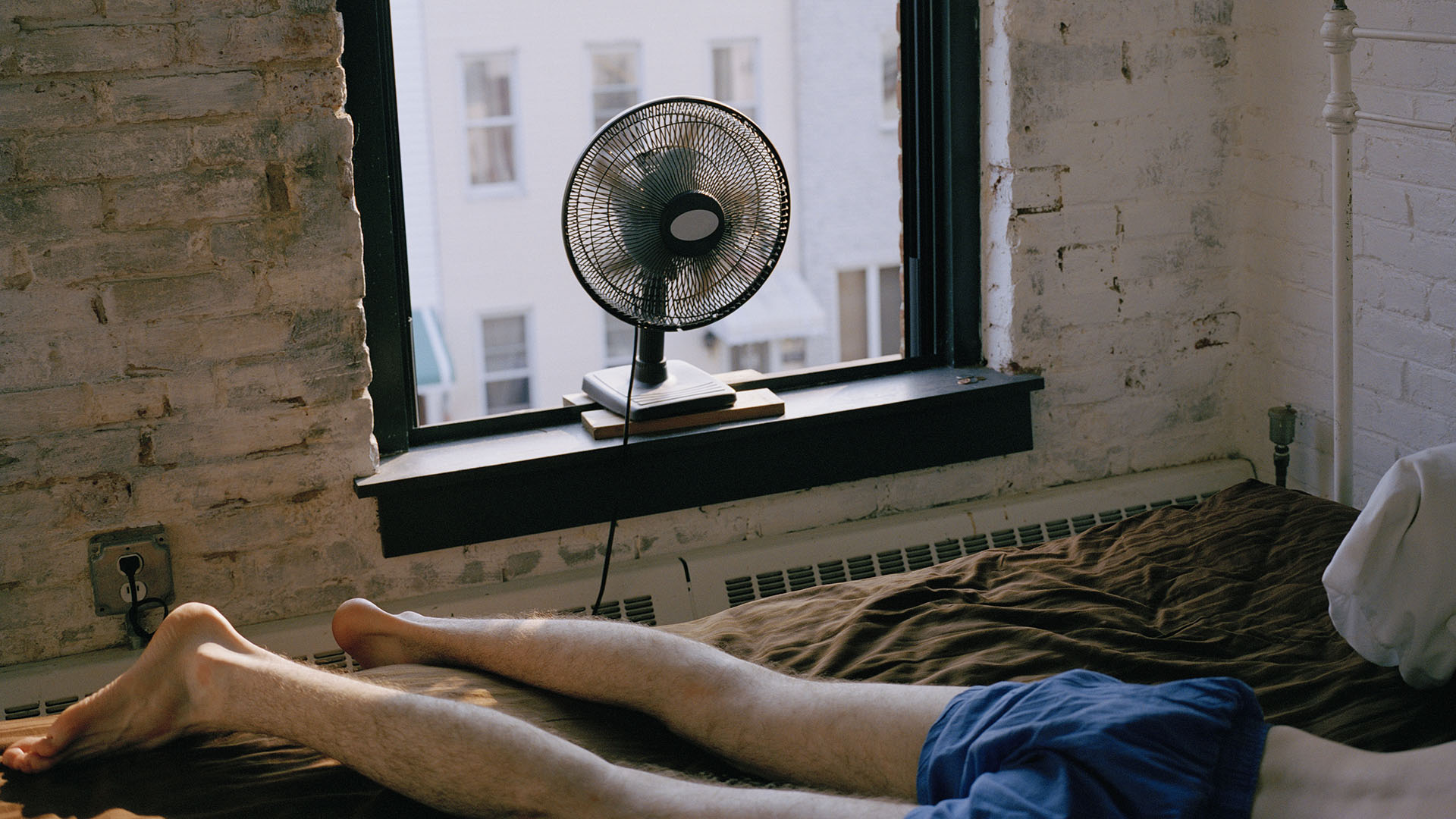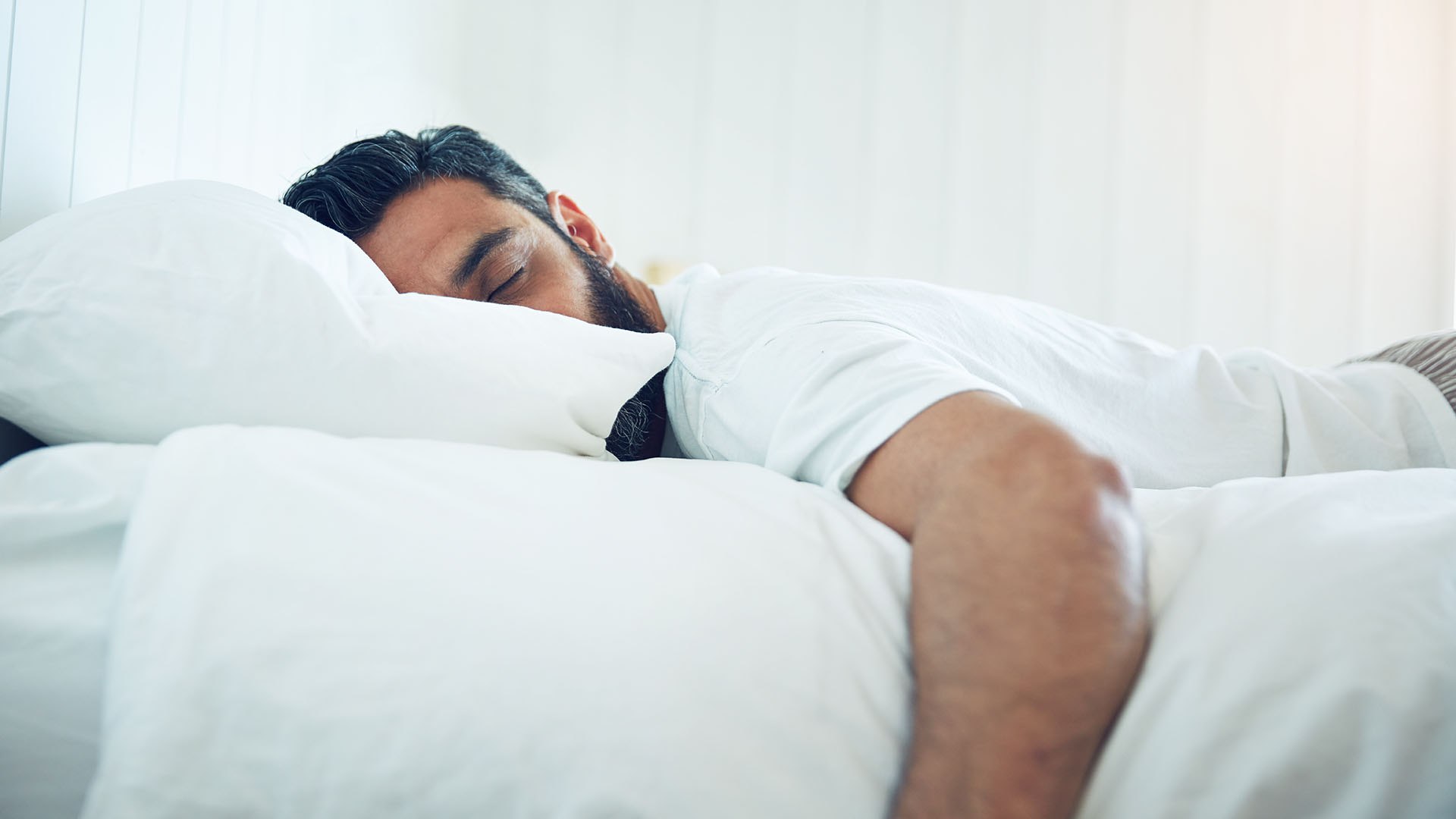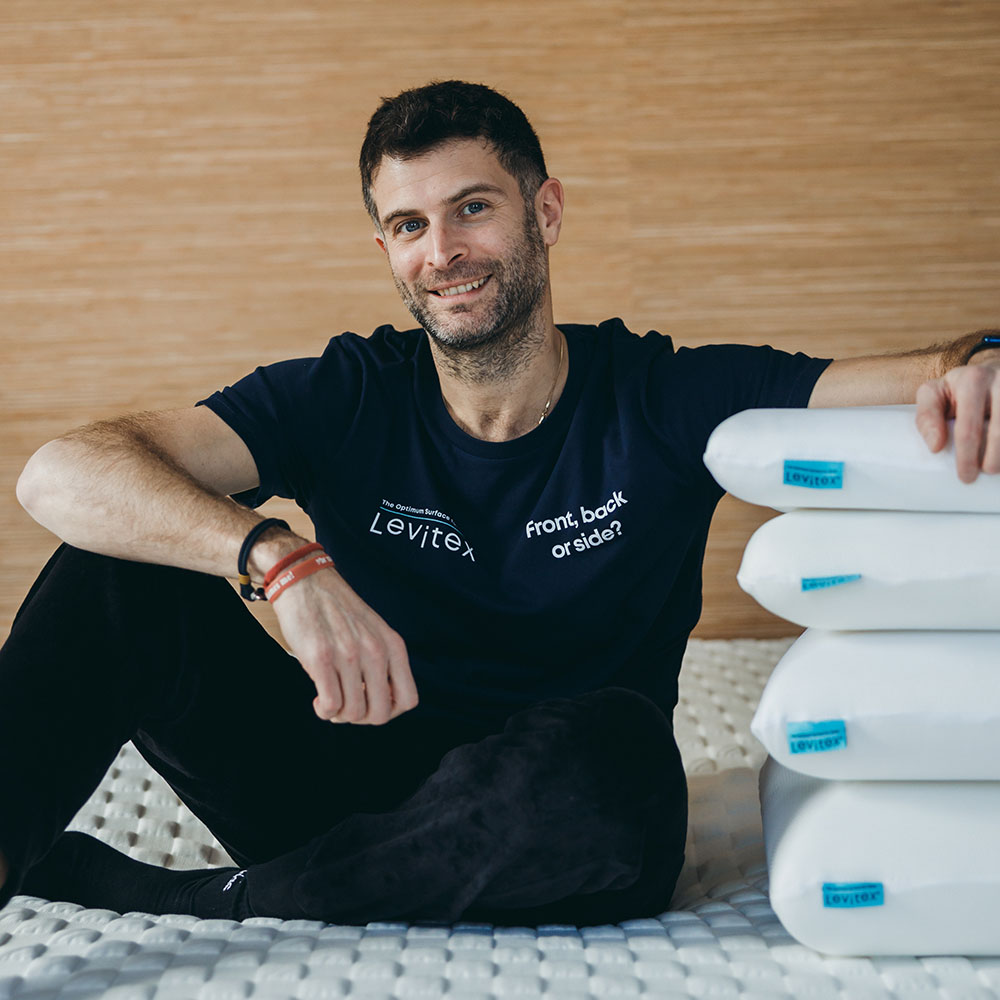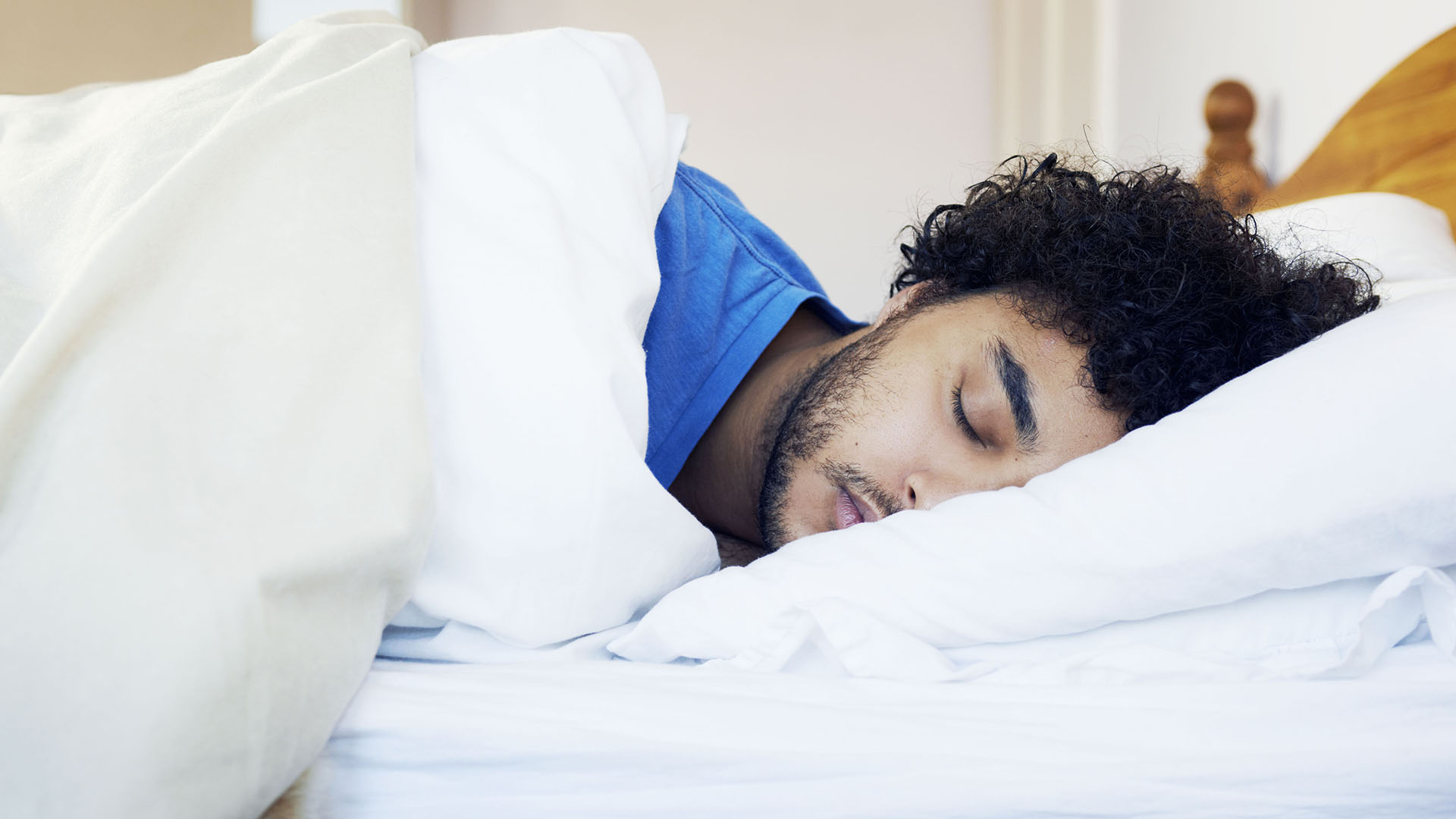What's the best position to sleep in when it's hot? We asked a sleep posture expert
Shifting sleep position could help cool you down on muggy nights – here's how

Being too hot can quickly disturb your slumber, which makes summertime sleep a constant challenge. There are plenty of techniques for sleeping when it's hot (and heatwave sleep mistakes you're probably making), including throwing money at the situation and purchasing one of the best cooling mattresses. But even if you regularly find yourself waking up in the night feeling hot and bothered, you probably haven't considered how the position you sleep in might be affecting things.
Tom's Guide spoke to sleep posture expert James Leinhardt to find out how sleep position impacts on how effectively your body can cool itself down, the best way to sleep when it's too hot, and how to train yourself into that position if it's not how you usually like to kip.
What's the best position to sleep in when it's hot?
To help keep your body as cool as possible, you should lie on your side. "The part of your body that gives off the most heat includes your forehead, closely followed by the area at the bottom of your spine," explains James. "If you're sleeping on your back, there is nowhere for this trapped heat to escape. By altering your lying position, and switching to your side, you will have the least amount of contact with the bed so the heat will naturally rise much quicker than if you're lying on your back."

Is any side-sleeper position OK?
In terms of keeping you cool, yes, but there is one specific position to opt for to ensure not only a chill night's sleep, but a healthy back. "It is well evidenced that semi-foetal side lying puts the least amount of tension through your spine, so to optimize your sleep posture, you should be adopting the 'Dreamer' position."
The 'Dreamer' is a semi-foetal position, with a bend in the legs, knees and ankles stacked, and hands in front of the face – not under your pillow. ("Essentially you are replicating a good seated posture, just on your side," says James.) We'll get on to some top tips for training your body into this position, including a nifty pillow technique, below.
Could you also lie on your front?
In terms of heat dispersion, technically, yes. But stomach sleeping is absolutely the worst position in terms of spine health, and for this reason we very much don't recommend it.
"You're rotating your neck and going against all the natural curves of your spine, which can lead to a whole host of aches and pains, and might cause you damage in the long run," says James.
- Read more: 3 reasons why stomach sleeping is bad for you — and how to switch positions
- Read more: Hot sleeper? Sleep expert shares 7 tips for keeping your bedroom cool ahead of summer

If you're someone who finds stomach sleeping most comfortable, James suggests you might be confusing comfort with familiarity. "I always describe it like this: imagine you're slouched in a chair, you may think you're comfortable, but after 20-30 minutes you'll need to reposition yourself, " he explains. "This is due to pressure building on top of your sacrum (at the base of your spine). Having an awkward bend in your spine is going to cause increased pressure and discomfort."
Get instant access to breaking news, the hottest reviews, great deals and helpful tips.
He points out that there are exceptions to this rule, for certain medical conditions, but for most of us it should be avoided.

Sleep posture specialist James has spent over a decade working with NHS trusts to provide specialist sleep solutions for bed-bound patients suffering with complex neurological illness and injury. He can be found sharing his message of the importance of sleep posture on TV, TikTok and as a university guest lecturer. James is also the founder of UK pillow and mattress brand Levitex.
How can I train myself to sleep in a new position?
Side sleeping is the most common sleep position, but if you're someone who naturally adopts a different pose, then James has some advice for training yourself into the cooling, spine-friendly 'Dreamer' pose.
1. Pop a pillow between your knees
Try placing another pillow (it doesn't need to be anything special) between your knees and ankles. This should stop you from slumping forwards and out of alignment in the night. If you have wider hips, as many women do, it can also help make the legs more parallel.
And if you have another spare pillow, James has a use for that, too. "If you keep rolling back onto your stomach, hugging another old pillow in front of you might help."

2. Get the right mattress
To keep things comfy, it's important to make sure you have the best mattress for your sleep style. The best mattresses for side sleepers tend to be medium or medium-firm, and allow the hips and shoulders to sink in a little, preventing pressure from building up (as would happen with a too-firm mattress). However, there are exceptions – heavier people should learn towards something firmer, and the best mattresses for back pain tend to be on the firmer side, too.
3. Make sure your pillow is the correct height
"There should only be one, supportive, pillow placed under your head," says James. "If you're sleeping with any more than one, then it's time to buy a new pillow." You're looking for a pillow that fills the depth between your ear and the surface of the bed, which for side sleeping might be quite deep (especially if you're broad-shouldered.
James' sleep company, Levitex, has a pillow that comes in four different heights. It happens to have been this Sleep Editor's pillow of choice for well over a year, (which is saying something because we've tried out tons of options), and we can personally vouch for it being a really great option. That's a UK brand, but readers in the US will find plenty of alternatives in the official Tom's Guide best pillow roundup).

4. Stick with it
Most people naturally shift about in the night, which means even if you put yourself to bed in the Dreamer pose, you might well wake up in a different position. According to James, that's fine – and doesn't mean your efforts aren't working.
"It's all about repetition," he says. "Each night, make sure to place your body in this side lying position. Even when you wake up through the night and find yourself gravitating towards your old habits, reposition yourself back to this original spot. The more times you do it, the more familiar the position will become, and your body will automatically default to this when you're going to sleep."

Ruth is currently Homes Editor on Tom's Guide's sister site TechRadar, where she reviews and writes about everything from air fryers to vacuum cleaners to coffee machines, as well as the latest smart home gadgets. Prior to making the shift to Homes, Ruth was Tom's Guide's Sleep Editor. A certified Sleep Science Coach, she has tested more mattresses than her small flat can handle and will talk at length about them to anyone who shows even a passing interest.
